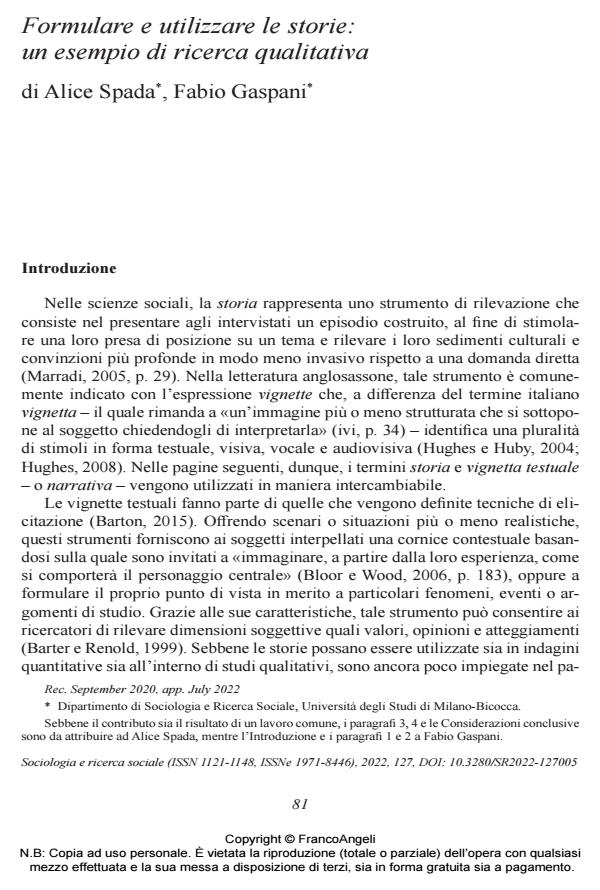Formulare e utilizzare le storie: un esempio di ricerca qualitativa
Titolo Rivista SOCIOLOGIA E RICERCA SOCIALE
Autori/Curatori Alice Spada, Fabio Gaspani
Anno di pubblicazione 2022 Fascicolo 2022/127
Lingua Italiano Numero pagine 18 P. 18-98 Dimensione file 211 KB
DOI 10.3280/SR2022-127005
Il DOI è il codice a barre della proprietà intellettuale: per saperne di più
clicca qui
Qui sotto puoi vedere in anteprima la prima pagina di questo articolo.
Se questo articolo ti interessa, lo puoi acquistare (e scaricare in formato pdf) seguendo le facili indicazioni per acquistare il download credit. Acquista Download Credits per scaricare questo Articolo in formato PDF

FrancoAngeli è membro della Publishers International Linking Association, Inc (PILA)associazione indipendente e non profit per facilitare (attraverso i servizi tecnologici implementati da CrossRef.org) l’accesso degli studiosi ai contenuti digitali nelle pubblicazioni professionali e scientifiche
In social research, narrative vignettes are increasingly implied to explore mul- tiple themes, including sensitive ones. This article illustrates the characteristics of this research tool, as well as the ways in which it is used. Furthermore, through an example relating to the educational field, the present work intends to provide indications for the formulation of stimulus texts for qualitative research. The focus is on the translation of conceptual areas into descriptive scenarios by maintaining adherence to the investigated themes. Moreover, potentialities and weaknesses of the use of narrative vignettes are examined.
Alice Spada, Fabio Gaspani, Formulare e utilizzare le storie: un esempio di ricerca qualitativa in "SOCIOLOGIA E RICERCA SOCIALE " 127/2022, pp 18-98, DOI: 10.3280/SR2022-127005